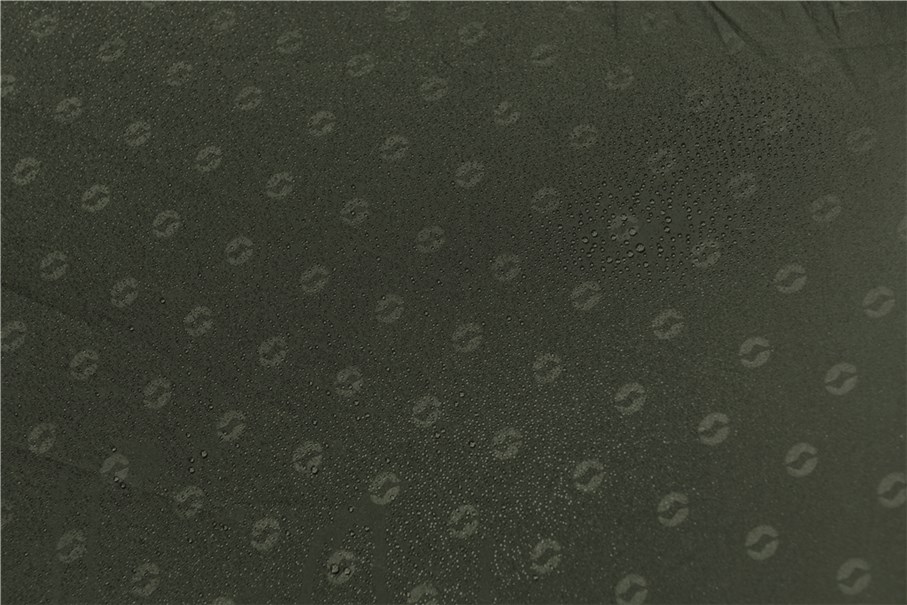
Anyone like a cold beer? I know I do! So when I take a cold beer out of the fridge on a hot day, and a film of condensation forms around the outside edge. This is the hot air meeting the cold glass and the water vapour in the air condensing into a liquid format, a similar thing is happening inside your tent.
Condensation is a modern day dilemma for many campers, especially in modern tents and awnings, and can often be mistaken for a leaking product. The issue stems from the use of modern materials such as polyester, and the modern designs of tents, which often feature a sewn-in groundsheet or Air structure technology. Living in a British climate, unfortunately it is hard to avoid this type of scenario or issue due to the nature of our weather - with the amount of rain we get, and the moisture that is often in the air. In years gone by, canvas and cotton tents did not suffer from condensation to the same effect, as the fabrics used were much more breathable heavier fabrics, and could mitigate the condensation. Modern tents are made from polyester, a blend of plastic, which is more lightweight for greater portability and smaller pack sizes, but sadly not breathable in nature, hence the modern day condensation issue.
We also have a sister blog about the differences between a leaking tent and condensation - Condensation vs Leaking tent.
This blog however, is designed to help alleviate the issue of condensation, and to explain why it does occur in modern tents and awnings.
What is Condensation?
Condensation, put simply is the process whereby water vapour takes a liquid format. It is the complete opposite of evaporation.
Definition according to Wikipedia:
“Condensation is the change of the physical state of matter from the gas phase into the liquid phase, and is the reverse of vaporization. ... It can also be defined as the change in the state of water vapor to liquid water when in contact with a liquid or solid surface or cloud condensation nuclei within the atmosphere.”
Source - https://en.wikipedia.org/wiki/Condensation
Key Causes of Condensation inside your Tent or Awning:
Cooking inside the Tent
If you are cooking inside your tent, expect plenty of condensation, as gas will create water vapour when you burn it, which cannot escape easily due to how waterproof your tent is.
If you have to cook in your tent (never use a BBQ), I would recommend cooking in the porch area or an area with plenty of ventilation, and no sewn-in groundsheet. This will allow some moisture to escape the tent easier reducing the effects of condensation inside the tent.
Camping in Wet Weather
If you are camping in really wet weather, or on wet ground, your tent being waterproof, will find it hard to expel the water, which your tent will suck from the ground. Furthermore, if there’s lots of moisture in the air, because your tent is so waterproof, the moisture cannot easily escape from inside your tent, causing more and more condensation.
Sewn-in Groundsheets
Sewn-in groundsheets also trap condensation inside the tent, though they offer huge benefits to the camper - a sewn-in groundsheet traps in the condensation inside the tent and the water can not exit the tent easily. So if your tent does have a sewn-in groundsheet, you can expect to experience more condensation inside your tent as a result, but it is a small price to pay for bug-free, draught free camping.
Airbeams / Air Tubes
Airbeams and air tubes seem to also be a factor in condensation, as the sun heats the beams throughout the day, and when the cool evening air comes into the tent, any moisture in the air clings to the beams, and rises like damp up the base of the Airbeams. I have camped in 38 degree weather at Glastonbury, 2019, and we had condensation on the base of every single beam in the mornings, and it did not rain for the 5 days we were camped. Air tubes definitely attract the condensation, and often it will pool at the base of your tent beam.
Examples of Condensation
- Pooling at the base of the beams
- Wet beams - almost like damp rising up the beam
- Film of liquid on the tent panel if you run your hand across it.
How to Stop Condensation?
Sadly, condensation is not completely avoidable if camping, but there’s plenty of tips you can take to negate the amount of condensation experienced.
Pick the Right Tent for the Climate
- Polycotton Tents - polycotton fabric - most people look to this type of product because it is a blend of cotton and polyester, allowing the tent to breathe much better than a 100% polyester tent. If the tent can breathe then condensation will be less of an issue. Polyester tents do not breathe, where as polycotton will be more climate friendly, whether it is hot or cold weather.
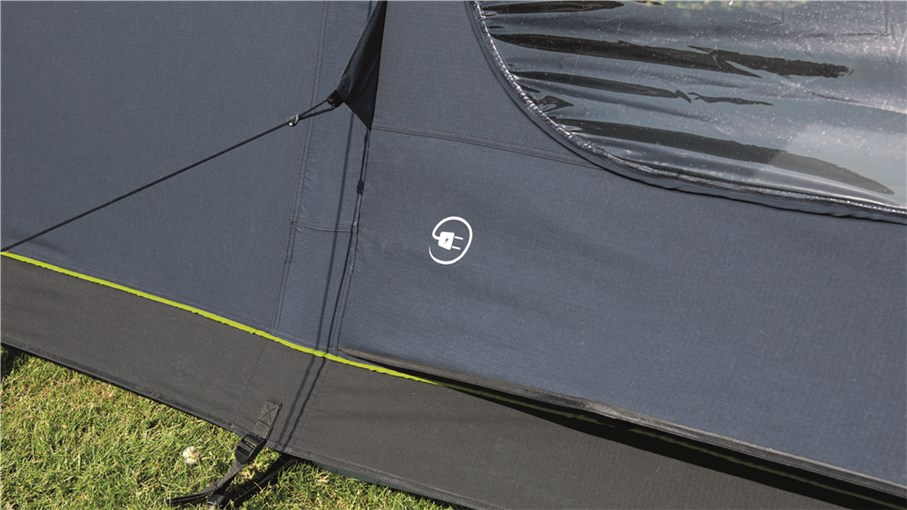
- Poled Tents - these are much better when it comes to condensation, as the poles are often external to the tent, as opposed to internal Airbeams, which seem to attract the condensation out of the air.
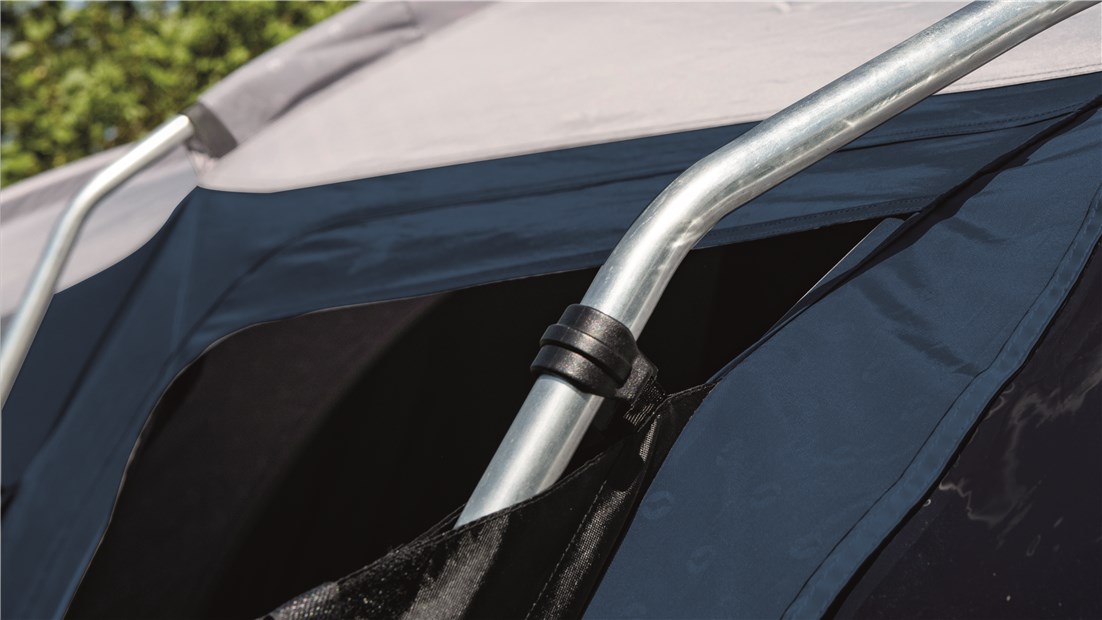
- Mesh panels on each door - one good sign on a tent is mesh door panels, or mesh internal windows - mesh helps the tent to breathe, thus reducing condensation. However, it is a way for manufacturers to cut down the cost and sell price of a tent, by reducing the mesh panels inside a tent. Therefore, some of the cheaper models will have less mesh, which in turn will increase the condensation suffered inside the tent. Ideally look for a tent with mesh ventilation on each door ways, as it will allow a greater airflow through the tent.
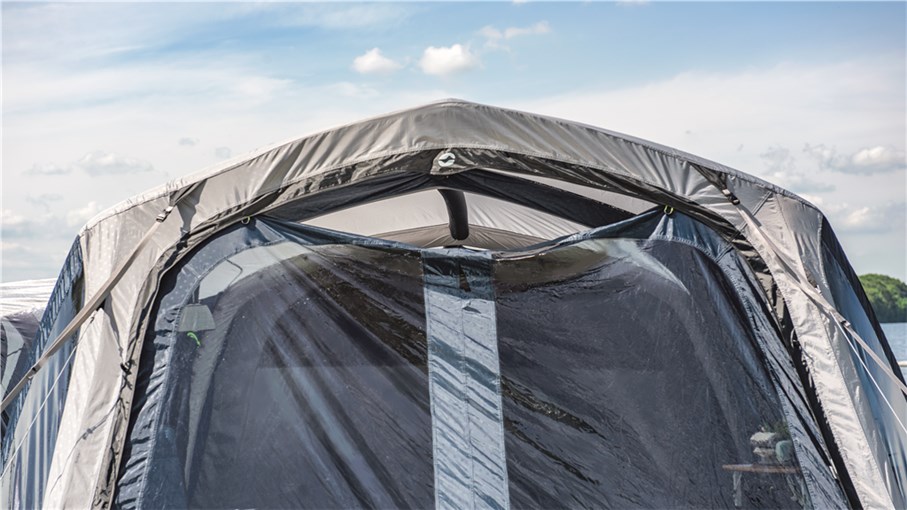
- Plenty of Ventilation Points - tents usually have ventilation points below the window, and at the rear of the tent by the sleeping compartment. It is good to look for a tent with mesh ventilation underneath each window - as the image below - this will again make sure the tent has airflow through it.
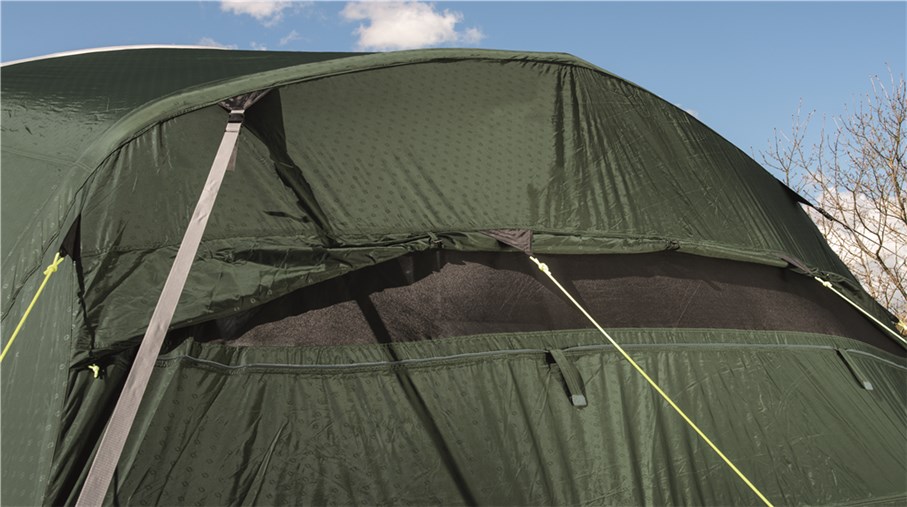
- Rear Ventilation Points - furthermore, at the rear of the tent where you sleep, there needs to be plenty of ventilation, as when we sleep we output up to 1 pint of moisture per night, so ventilation where you sleep is very important. Outwell have an awesome design for 2021, with full mesh windows and panels at the rear of the tent to reduce the condensation felt within the tent. See image below:
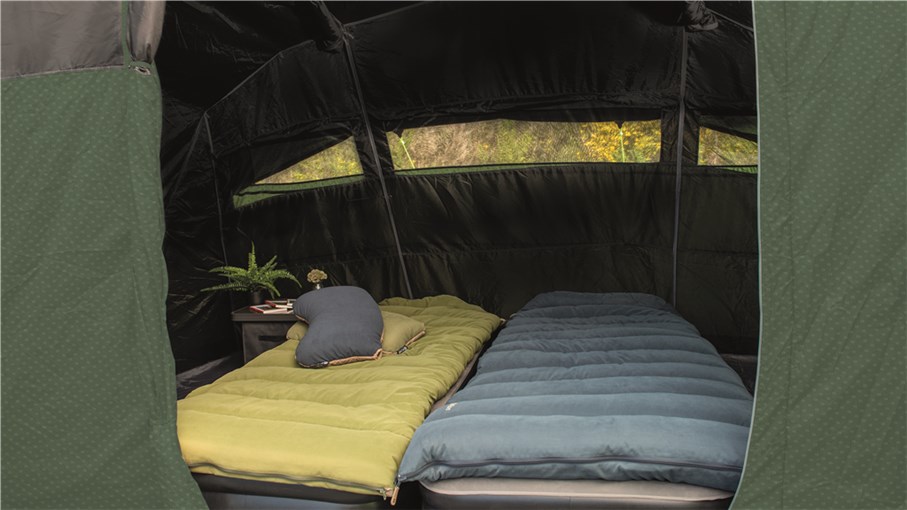
Basic Tips
- Open all the tent ventilation points, and keep them open all the time, whether rain, wind or sun.
- Leave doors open with mesh panels for an hour or two a day to get some airflow through the tent.
- A fan can often help create a breeze through the tent.
- Don’t sleep more people in the tent, than the tent is designed for.
- Buy a cotton tent as opposed to a polyester tent.
- Don't cook inside the tent.
- Try not to store wet gear inside the tent - try to keep this in the porch area.
- Don't camp right by water.
- Take spare towels.... incase its a condensation heavy weekend
- Damp traps, which can be purchased cheap, at the bottom of each Airbeam
Unknown Facts
- Your tent will experience condensation if no one sleeps in it overnight, there is still the chance of condensation inside the tent.
- Our indoor showroom, we occassinally see condensation at the base of the Air tubes in the mornings. These tents are pitched inside with no one present sleeping in them.
- Each person outputs up to a pint of water vapour each night whilst sleeping.
